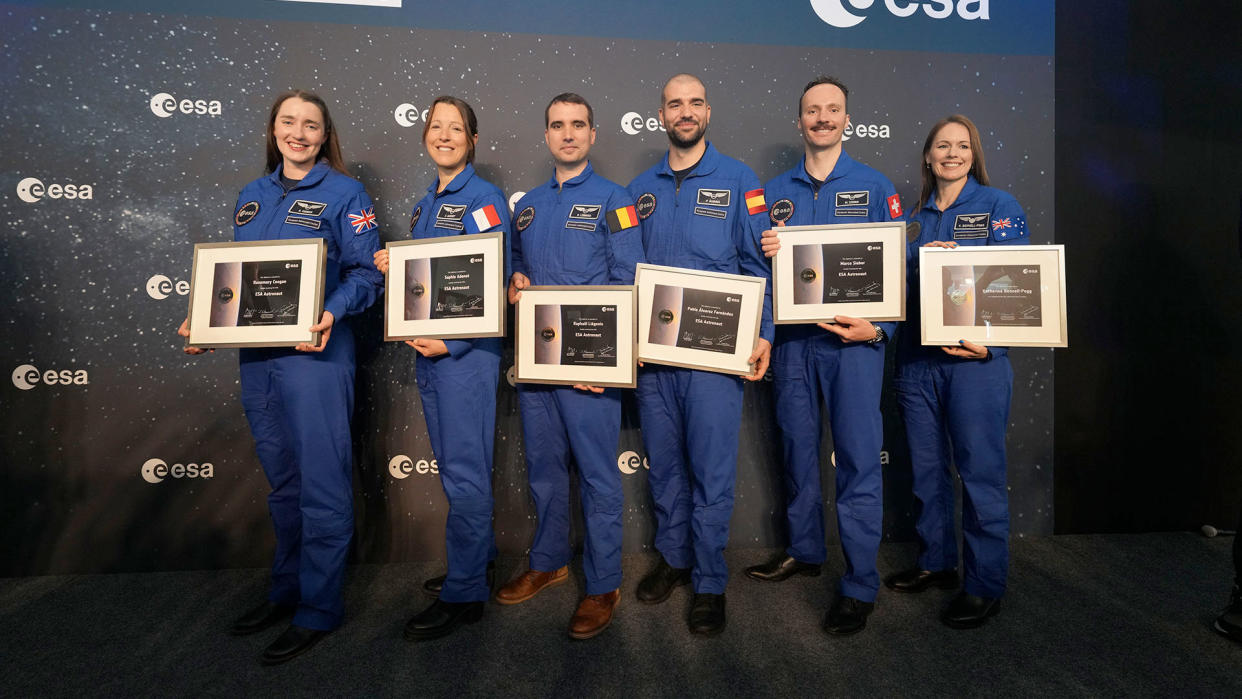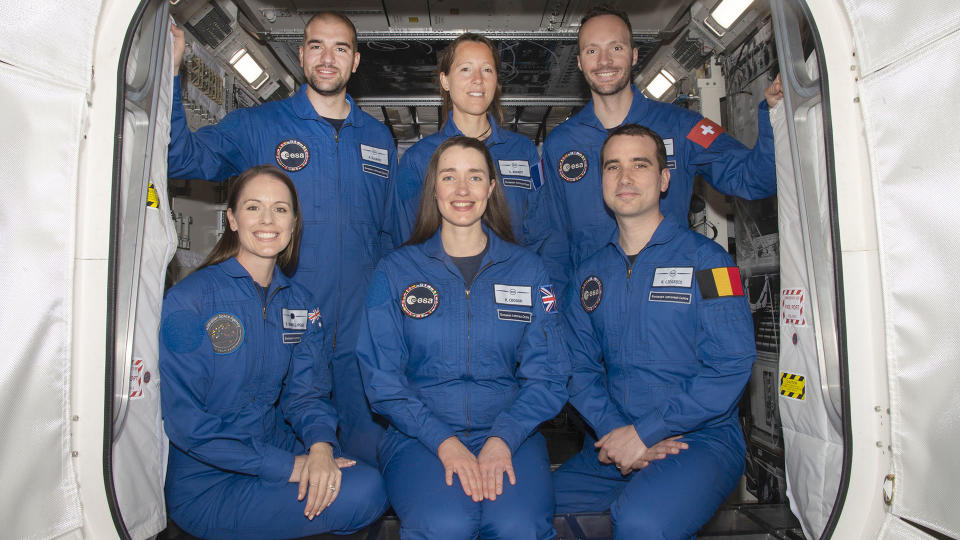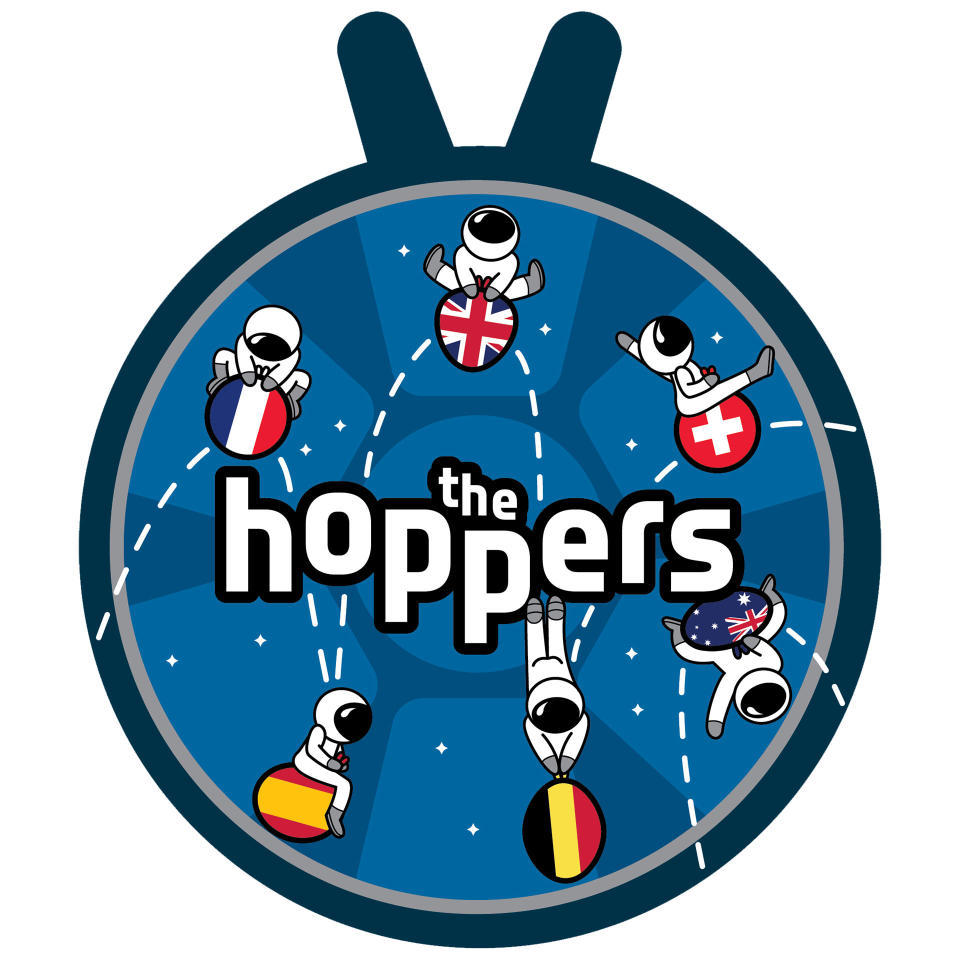ESA graduates the 'Hoppers': Europeans, Australian pass astronaut basic training

Five new European astronauts and the first astronaut from the Australian Space Agency are now ready to "hop" into their first flight assignments, having completed basic training.
The European Space Agency (ESA) on Monday (April 22) held a graduation ceremony for the "Hoppers," the nickname for the new astronauts who were selected in 2022. Taking the stage at the European Astronaut Centre (EAC) in Cologne, Sophie Adenot of France, Pablo lvarez Fernández of Spain, Rosemary Coogan of the United Kingdom, Raphaël Liégeois of Belgium, Marco Sieber of Switzerland and Katherine Bennell-Pegg of Australia received their diplomas.
"Today is a significant milestone as we celebrate the graduation of a new class of five ESA astronauts, who are now qualified to be assigned to future spaceflights. I am also proud to witness the graduation of an Australian astronaut candidate, which reaffirms our dedication to advancing international cooperation in space exploration," said Josef Aschbacher, ESA's director general.
"The addition of fresh talent and diverse perspectives and expertise enhances our ability to navigate the complexities of space exploration and solidifies ESA's role as a pioneering force in shaping our future in space," Aschbacher said.
Related: Europe's new astronaut class features 2 women and a paralympian trauma surgeon
Reporting for training in April 2023 — five months after they were announced — the Hoppers began their studies at the EAC and then moved on to other facilities around the world. Over the course of a year, they were introduced to and received instruction in spacecraft systems, spacewalking, flight engineering, robotics and life support systems, as well as survival and medical training.
The new astronauts are now eligible for the next phases of pre-assignment and mission-specific training, leading to them launching to the International Space Station (ISS), if not later the moon.
The five newly graduated European Hoppers were chosen alongside 12 "reserve" astronauts, a new category for ESA's corps from which the agency will pick when alternate flight opportunities become available. Marcus Wandt of Sweden became the first ESA "project astronaut" to fly this past January when he joined the Axiom-3 commercial mission to the ISS.
"We embark on a new era in European astronaut history," said Daniel Neuenschwander, ESA's director of human and robotic exploration. "These five new members of the European astronaut corps, alongside the members of the reserve, underscore our dedication to fostering talent and maximizing opportunities for space exploration."

The addition of the Hoppers brings ESA's active astronaut corps to 11 members.
Bennell-Pegg, whose training was conducted under a cost reimbursement agreement, remains an Australian Space Agency employee and is not a member of the ESA corps. She was the first candidate from an international partner to undergo basic training at the European Astronaut Centre.
"I'm incredibly determined to make the most of this past year, and whatever follows, to generate further opportunities for Australian industry, and the aspirations of everyone back home," said Bennell-Pegg in a statement released by ESA. "Partnering with ESA has been a remarkable opportunity to not only contribute to our shared goals but also to foster collaboration on a global scale, which is essential for the future of space exploration."
The Hoppers — who by tradition were named by ESA's prior astronaut class, the 2009 "Shenanigans" — were dubbed such for their ambition "to hop in low gravity." That aspiration is also reflected on their class patch, which borrows from a similarly titled children's toy.

RELATED STORIES:
— Record-high astronaut applications overwhelm European Space Agency
— European Space Agency: Facts & Information
— Australia seeks public help to design its 1st moon rover, Roo-ver
The emblem is in the shape of a hopper ball, an inflatable atop which kids sit and jump. The patch, created by ESA graphic designer Karen Lochtenberg, shows the six new European and Australian astronauts bouncing on their own hoppers, with each ball bearing the colors of the national flag of its rider.
"During training, it's said that the newcomers often improvised their own set of rules. Similarly, they now bounce through the patch with energy, crossing its borders freely. Among them, the Australian space hopper follows her own path, flipping upside down," reads ESA's description of the insignia.
The Hoppers are backdropped on the emblem by 12 white stars, representing the members of the ESA astronaut reserve, and seven windows, symbolizing the Cupola on the ISS. The latter is a carryover from the Shenanigans' patch, which also had the windows as part of its design.
Follow collectSPACE.com on Facebook and on Twitter at @collectSPACE. Copyright 2024 collectSPACE.com. All rights reserved.

